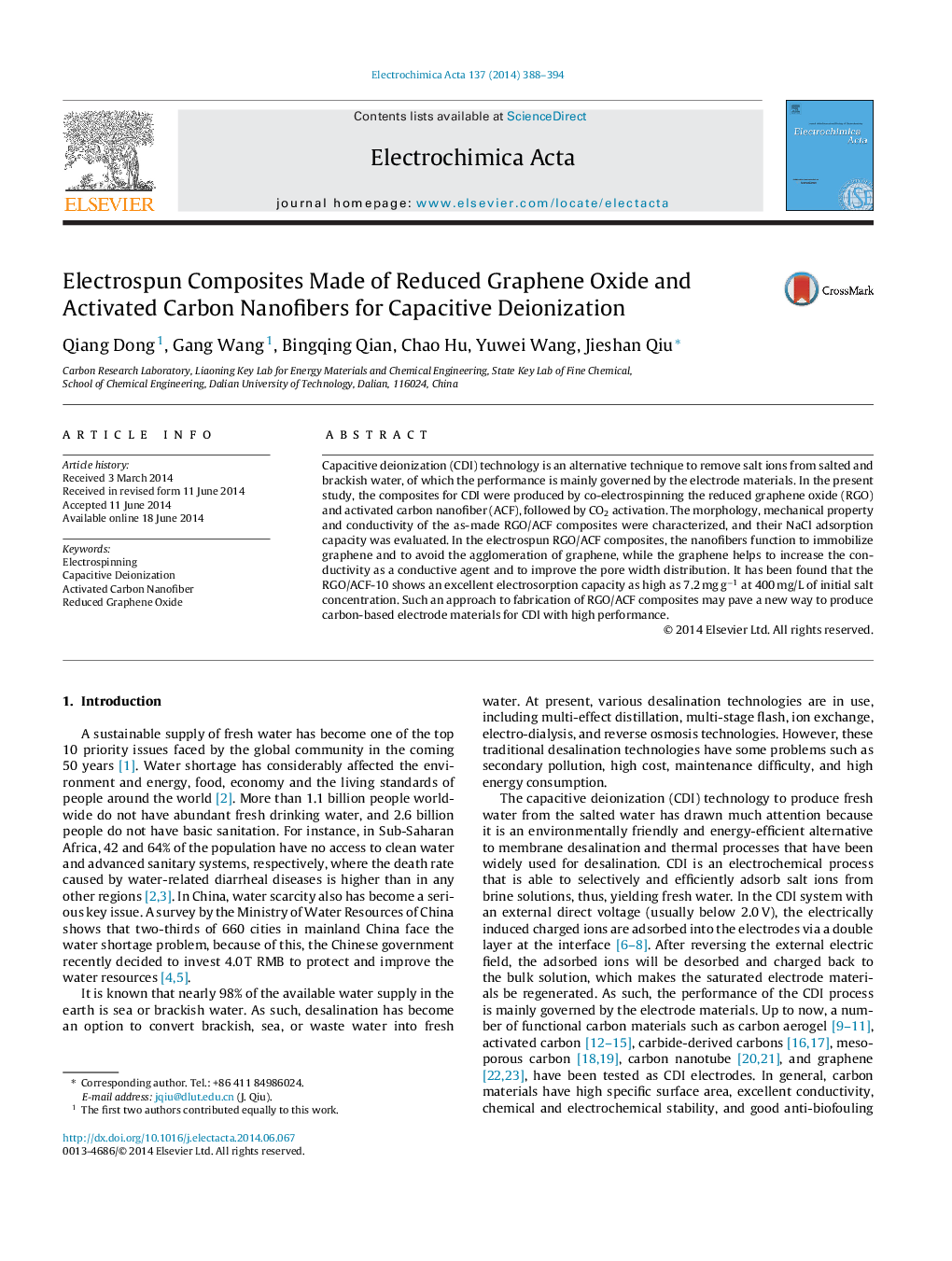| Article ID | Journal | Published Year | Pages | File Type |
|---|---|---|---|---|
| 185587 | Electrochimica Acta | 2014 | 7 Pages |
Capacitive deionization (CDI) technology is an alternative technique to remove salt ions from salted and brackish water, of which the performance is mainly governed by the electrode materials. In the present study, the composites for CDI were produced by co-electrospinning the reduced graphene oxide (RGO) and activated carbon nanofiber (ACF), followed by CO2 activation. The morphology, mechanical property and conductivity of the as-made RGO/ACF composites were characterized, and their NaCl adsorption capacity was evaluated. In the electrospun RGO/ACF composites, the nanofibers function to immobilize graphene and to avoid the agglomeration of graphene, while the graphene helps to increase the conductivity as a conductive agent and to improve the pore width distribution. It has been found that the RGO/ACF-10 shows an excellent electrosorption capacity as high as 7.2 mg g−1 at 400 mg/L of initial salt concentration. Such an approach to fabrication of RGO/ACF composites may pave a new way to produce carbon-based electrode materials for CDI with high performance.
